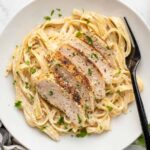Introduction to the How Many Oz Are In A Cup Of Measuring Ingredients
Have you ever found yourself in the kitchen, staring at a recipe that calls for cups and ounces, unsure of how to measure accurately? You’re not alone. Many home cooks struggle with converting measurements, especially when it comes to dry versus liquid ingredients. Understanding How Many Oz Are In A Cup can make all the difference between culinary success and disaster.
Whether you’re baking a cake or whipping up a savory dish, knowing precise measurements is crucial. This blog post unpacks everything you need to know about measuring ingredients correctly—so grab your measuring cups and let’s dive into the world of ounces and cups!
Differences between dry and liquid measurements
When it comes to measuring ingredients, understanding the distinction between dry and liquid measurements is crucial. Dry ingredients, like flour or sugar, are typically measured by weight. This means they can vary in volume based on how packed they are.
On the flip side, liquids such as water or milk take a different approach. How Many Oz Are In A Cup They’re generally measured using volume since their density remains consistent regardless of temperature changes.
Using cups for liquids tends to be straightforward. One cup always holds a specific amount of fluid ounces—easy enough, right? But with dry ingredients, you might find that one cup can weigh differently depending on what you’re measuring.
Getting these measurements right ensures your recipes turn out perfectly every time. Understanding these differences helps prevent mishaps in baking and cooking adventures.
Understanding the measurement units: ounces and cups
When it comes to cooking and baking, understanding measurement units is crucial. How Many Oz Are In A Cup Ounces and cups are two common terms you’ll encounter in recipes.
A cup is a volume measurement typically used for both dry and liquid ingredients. It’s often associated with kitchen measuring tools that make cooking straightforward.
Ounces, on the other hand, can refer specifically to fluid ounces for liquids or ounces by weight for solids. This distinction matters when you’re trying to achieve recipe accuracy.
In the United States, one cup equals 8 fluid ounces. However, this doesn’t apply uniformly across all ingredients due to their varying densities.
Understanding these differences ensures you mix your ingredients correctly while avoiding mishaps in taste or texture. Familiarizing yourself with how these units work together simplifies meal prep significantly.
How Many Oz Are In A Cup for dry ingredients
When measuring dry ingredients, the conversion can vary slightly depending on what you’re using. Generally, one cup of a dry ingredient equals 8 ounces by weight How Many Oz Are In A Cup.
This measurement holds for common staples like flour and sugar. However, not all dry ingredients are created equal. For instance, a cup of packed brown sugar weighs more than granulated sugar.
It’s essential to consider how you fill that cup too—scooping directly from the bag can lead to inaccuracies due to compaction. Fluffing up your flour or gently spooning it into the measuring cup is often recommended for better precision.
Always remember that factors like humidity and packing method may affect the total weight as well. How Many Oz Are In A Cup Using a kitchen scale provides an excellent alternative for achieving accuracy in your cooking adventures!
How Many Oz Are In A Cup for liquid ingredients
When measuring liquid ingredients, the standard conversion is straightforward. One cup equals 8 fluid ounces. This holds true for most liquids like water, milk, and oil.
Using a clear liquid measuring cup can help ensure accuracy. These cups often feature measurement markings on the side. This makes it easy to pour up to the desired volume without guessing.
Keep in mind that different liquids may have varying densities. However, for general cooking and baking purposes, sticking to this 1-cup-to-8-ounce rule works well.
For recipes requiring precision, especially in baking, using scales might be beneficial too. They provide an extra level of accuracy that can enhance your results significantly in delicate dishes or baked goods where every drop counts.
Tips for accurate measurements
Accurate measurements are essential in cooking and baking. How Many Oz Are In A Cup Here are some practical tips to help you achieve that.
Always use the right tools. Invest in a good set of measuring cups and spoons, specifically designed for dry or liquid ingredients. This will ensure you get precise amounts every time.
When measuring dry ingredients, scoop gently into the cup without packing it down. Level off with a straight edge for consistency.
For liquids, make sure to check at eye level. This prevents misreading due to angles or distortions caused by the container’s shape.
If using weight-based recipes, consider getting a kitchen scale. It’s often more accurate than volume measurements, particularly for dense ingredients like flour or sugar.
Always double-check your conversions if switching between ounces and cups. How Many Oz Are In A Cup A small error can lead to significant differences in your final dish!
Converting between ounces and cups
Converting between ounces and cups is a handy skill in the kitchen. Knowing this can simplify many recipes.
A cup holds 8 fluid ounces for liquids, making conversions straightforward. But when it comes to dry ingredients, it gets trickier.
For example, a cup of flour weighs about 4.25 ounces. This variation happens due to density differences among ingredients.
To make converting easier, keep a conversion chart on hand. It allows you to quickly reference common ingredient measurements without fussing over calculations at the moment.
Using measuring tools designed for specific types—like liquid measuring cups versus dry measuring cups—ensures accuracy too.
When in doubt, always weigh your ingredients if precision matters most in your recipe!
Common conversions for various ingredients
When it comes to cooking, knowing How Many Oz Are In A Cup for various ingredients can save you time and effort. Different substances have unique densities that affect their conversions.
For example, one cup of all-purpose flour weighs about 4.25 ounces. In contrast, a cup of granulated sugar is around 7 ounces. These differences can significantly impact your recipes if not measured correctly.
Brown sugar packed in a cup usually weighs about 8 ounces because of its moisture content. For liquids like water or milk, one cup equals approximately 8 fluid ounces.
If you’re dealing with butter, remember that one stick (1/2 cup) is equivalent to 4 ounces. Familiarizing yourself with these common conversions will help improve your culinary skills and ensure consistent results every time you cook or bake.
Importance of precise measurements in cooking and baking
Precise measurements are the backbone of successful cooking and baking. When you follow a recipe, accuracy ensures that flavors meld perfectly. A pinch too much salt or flour can alter your dish dramatically.
Baking is especially unforgiving. It’s a science as much as an art. The right ratios determine whether your bread rises or cookies spread too thinly on the baking sheet.
In cooking, while some may embrace improvisation, exact amounts yield consistent results. This consistency builds confidence in the kitchen and keeps guests coming back for more.
Using proper measuring tools also reduces frustration during preparation. How Many Oz Are In A Cup No one enjoys a last-minute scramble to adjust ingredient quantities mid-recipe!
Understanding How Many Oz Are In A Cup helps eliminate guesswork and enhances overall culinary skills. With practice, accurate measurement becomes second nature, leading to delicious outcomes every time you cook or bake.
Conclusion
When it comes to cooking and baking, understanding How Many Oz Are In A Cup is essential. This knowledge helps you navigate recipes with confidence, ensuring your dishes turn out as intended. Knowing the difference between dry and liquid measurements can make all the difference in achieving accurate results.
With this guide, you’ve learned that a standard cup contains 8 fluid ounces for liquids but varies for dry ingredients. As you experiment in the kitchen, keep handy conversion tips and common ingredient measures close by. Precision is key when it comes to culinary success; even small discrepancies can alter flavors and textures.
Mastering these measurements will elevate your cooking skills while saving time on guesswork. So whether you’re whipping up a cake or simmering a stew, remember that every ounce counts! Embrace the art of measurement and enjoy creating delicious meals with ease.

















